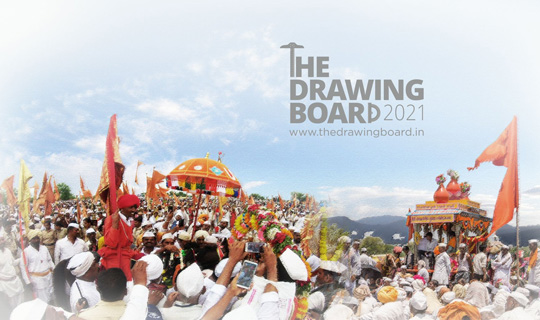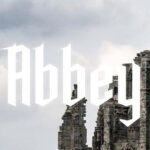Submission: September 9, 2021
Registration: September 9, 2021
Language: English
Location: Velapur, India
Prizes: Please see details below
Type: Open
This year’s challenge is about understanding and taking pride in Maharashtra’s 800-year-old tradition called ‘Wari’, which involves a journey to a significant place of religious importance. Velapur, a small agricultural town in the Malshiras Tehsil of Solapur district, serves as a place for rest for the Warkaris, for a night, before resuming their journey onward to Pandharpur. ‘The Incompleteness in Design or the Design of Partially Completed Structures’ should facilitate temporary additions, interventions by the Warkaris.
Journeying to a place of special significance plays an important role in all cultures and religions. The destination may be a shrine of a Deity, a Saint or a venerated figure or could be a site marked by particular events. It involves journeying alone or in a group, reaching a destination, encountering unique rituals, enjoying particular experiences along the way and returning home. The Pandharpur Wari is one such enlightening and rewarding journey.
The Pandharpur Wari, a 21-day one-way sojourn is undertaken in the months of June and July (Ashadh), from Alandi and Dehu to Pandharpur to meet and worship Lord Vithoba. It is a heritage treasure, especially for Maharashtra, encompassing the spiritual, spatial and social elevation of humankind sustained by Wari as an instrument of change since the last 700 years. This march on foot from various locations in Maharashtra to Vithoba temple, Pandharpur, attracts over a million pilgrims. The pilgrims start from Alandi in Pune district carrying the Palkhi (palanquin) of Sant
Dnyaneshwar and reach Pandharpur via Pune, Saswad, Jejuri, Lonand, Taradgaon, Phaltan, Natepute, Malshiras, Velapur, Shegaon and Wakhri. The pilgrims are arranged in diverse groups known as Dindis.
PROGRAM
Drinking water facility, parking provision and hygiene and sanitation are integral to the brief. The proposed intervention should not only recognize and respect the surrounding environment, but also should transform and adapt to absorb the activities of the inhabitants of Velapur and be converted into a shanty market, a festive square or a multipurpose facility with temporary additions.
In addition to the above, the design brief comprises of permanent buildings – A Gram Panchayat office, a small museum or gallery for the display of collection of sculptures and ruined elements of temples that existed a few centuries ago during the Yadava Period. A design proposal is invited for developing the ruined temple complex and the temple Ghats for the use of various rituals and for tourists to halt while traveling on the highway. The total area of disaggregated buildings can be a maximum of 10,000 sq.ft. The essence of the design is in the seamless integration of the temporary, partially completed and the permanent buildings.
The site context
Two land parcels with a connecting road and existing temples of historical significance form an important layer and backdrop for the proposed activities. One of the land parcels is a temple complex off the Pune-Pandharpur highway, with an access from the highway and the main village road measuring 7,271 sq.m. It comprises of an open ground, and an existing old Khandoba Temple which is worshipped by the residents of Velapur. The temple has a pavilion and a central courtyard, which houses the main shrine. Four Deepastambhas (Hindu architectural structures for oil lamps) and an existing tree are also integral to this complex. The Warkaris and the residents of Velapur perform rituals here during their one-day halt. The second land parcel has an area of 38,481 sq.m. with a strong historical presence of a ruined temple and a temple Tank (Kund), which was built in the Hemadpanti style, c.1300 during the reign of Devagiri Yadava king Ramchandra (1271-1310). The site has a few existing trees. The path connecting both the land parcels is sacred in nature with the plaza being the point of pause. Intervention along this pathway should only enhance the sacredness. This pathway will also be used by the Warkaris.
ELIGIBILITY AND PRIZES
We are organizing the 6th edition of The Drawing Board – an annual international competition for architecture & design students. One who is currently studying or has recently graduated from architecture or design course can participate in this competition. There is no entry fees and 3 winning teams receive prizes worth Rs. 1,10,000/-.
This year’s design challenge is therefore, much more than an architecture contest. Immerse yourself in the study of Wari and discover the higher calling that pilgrims submit to each year.








